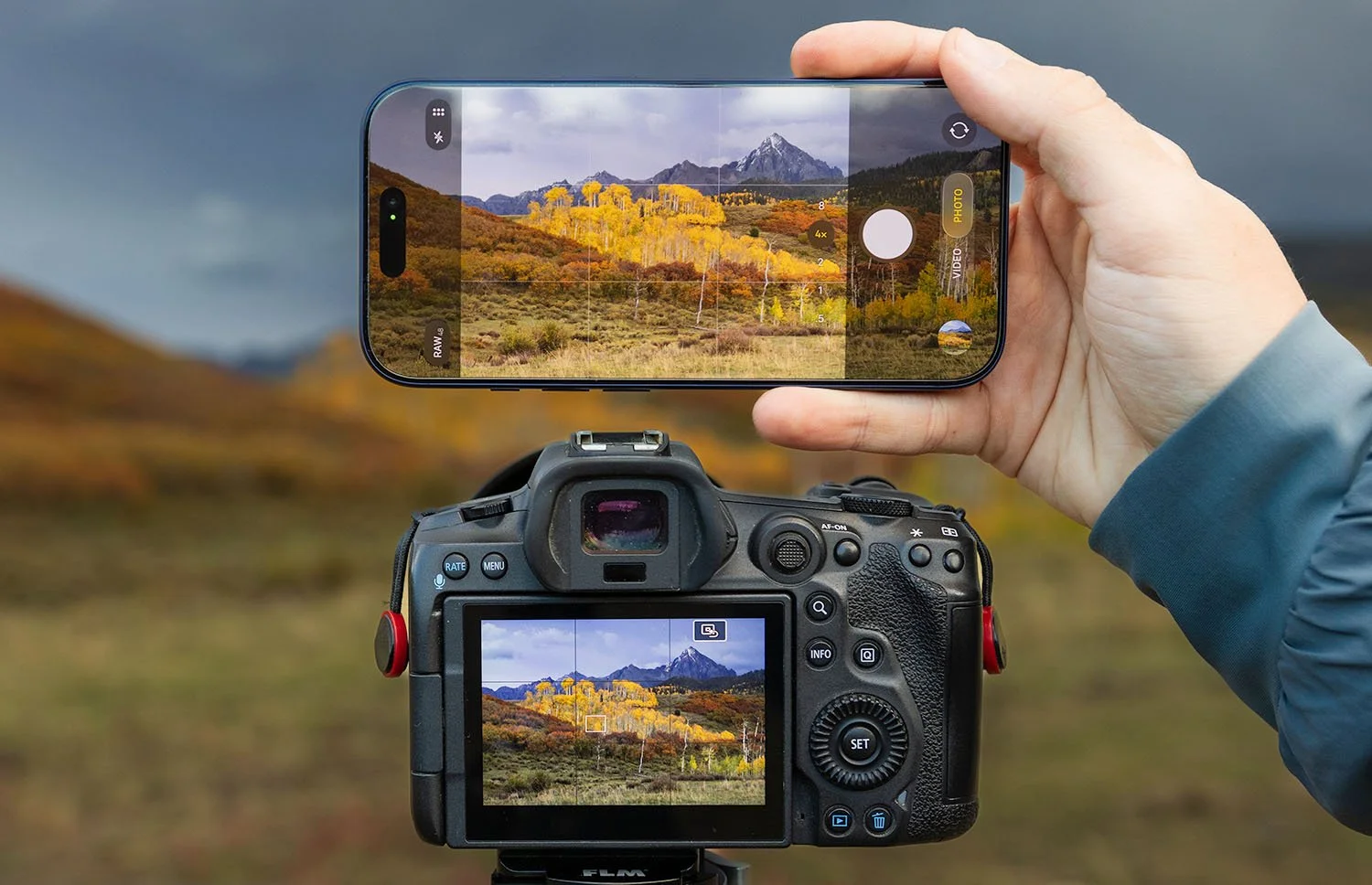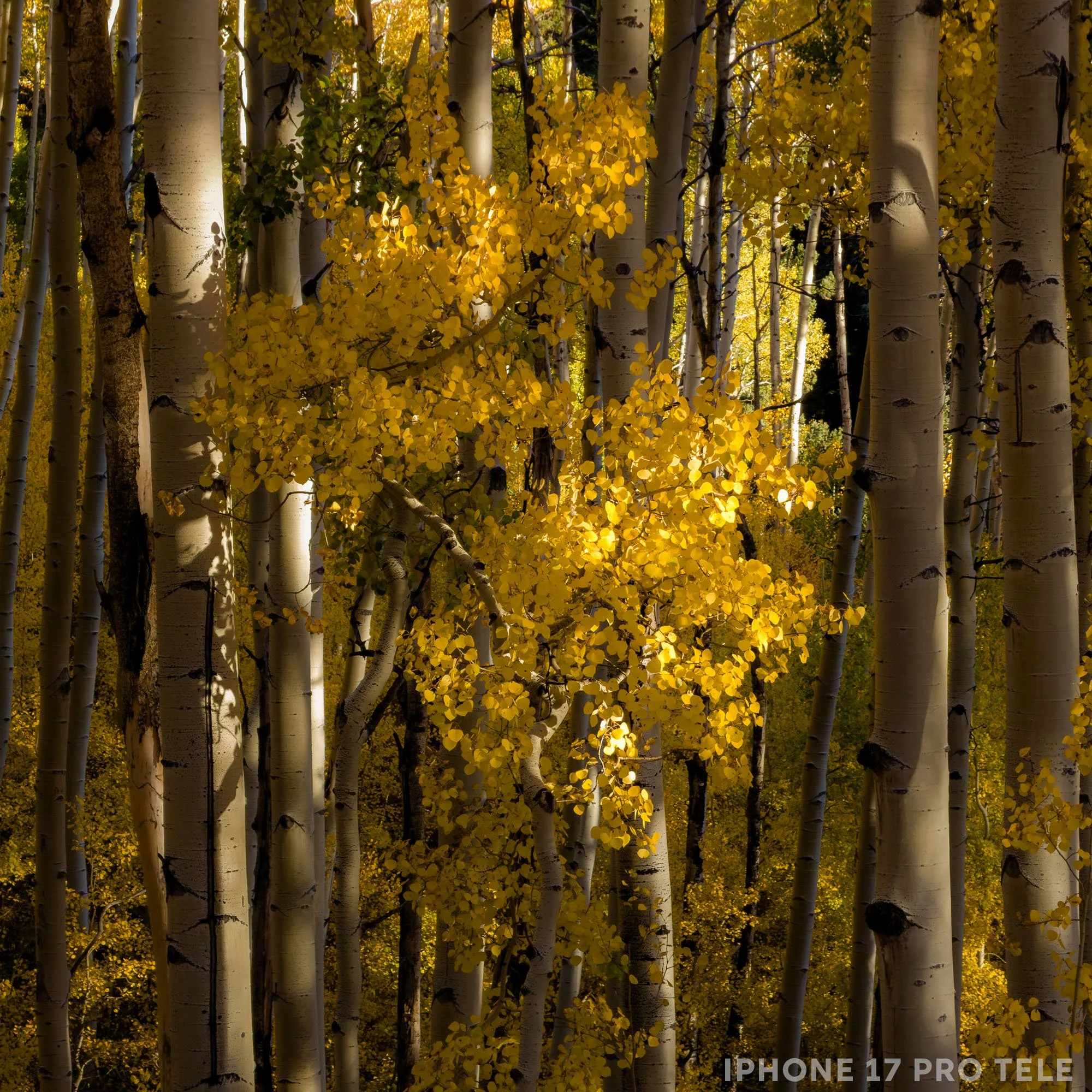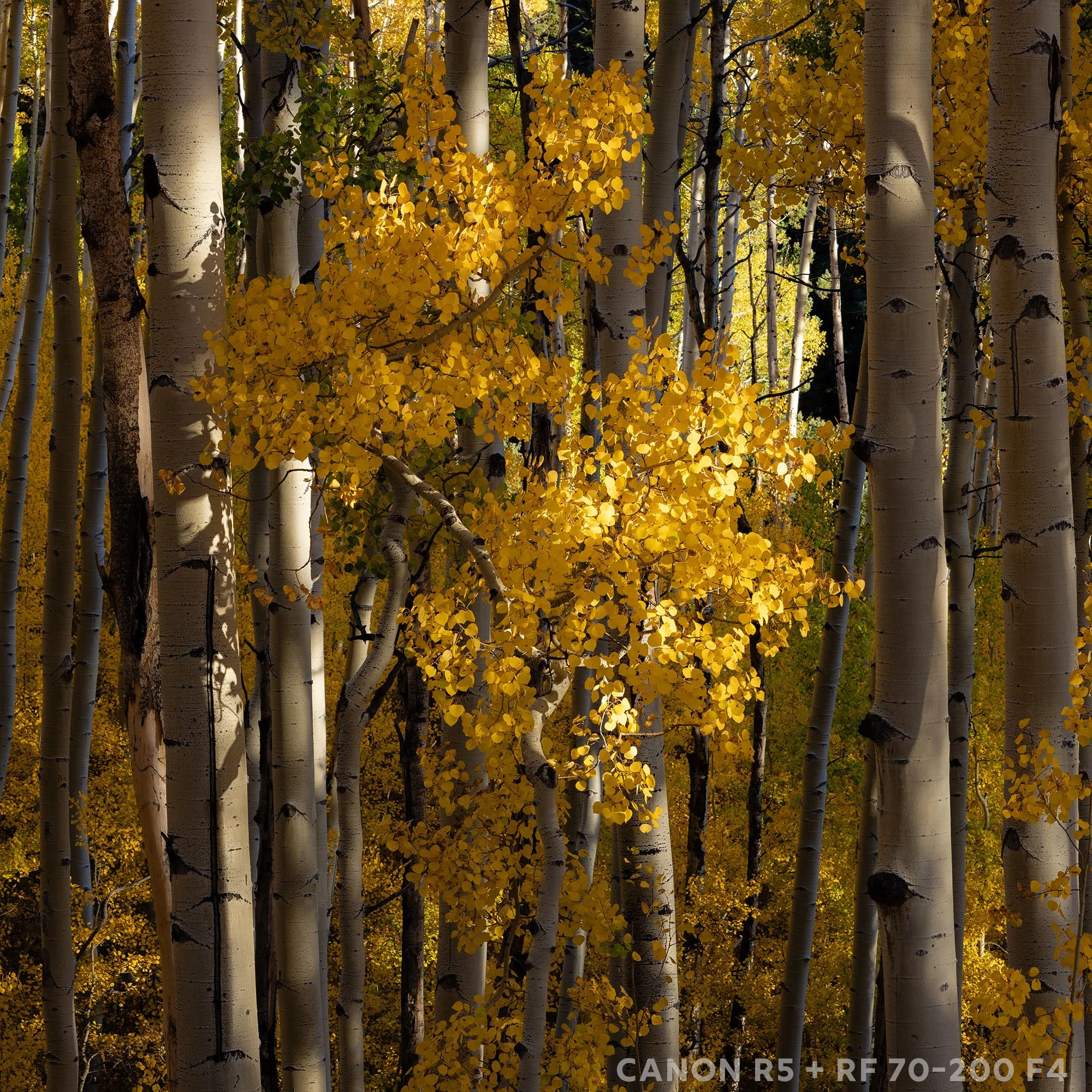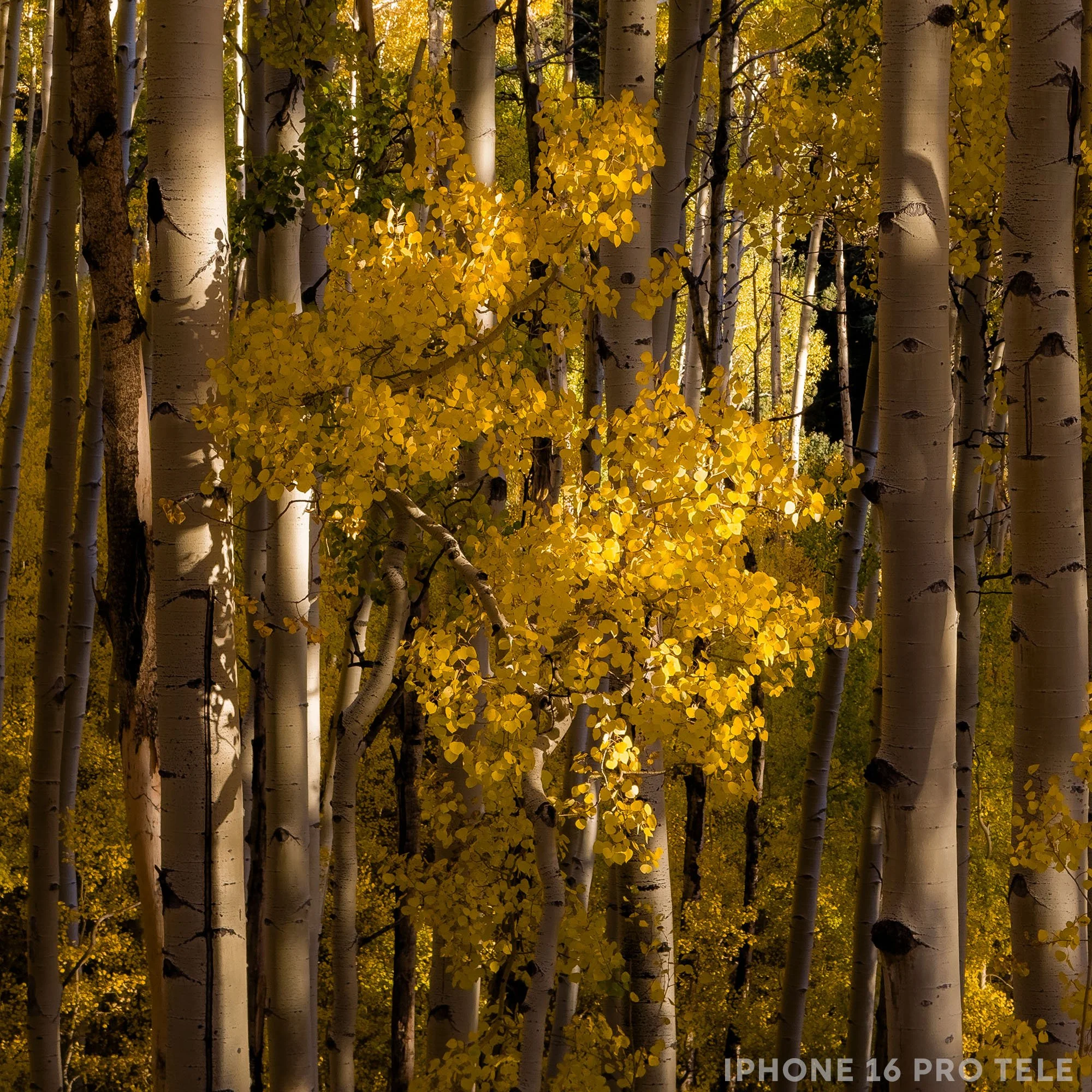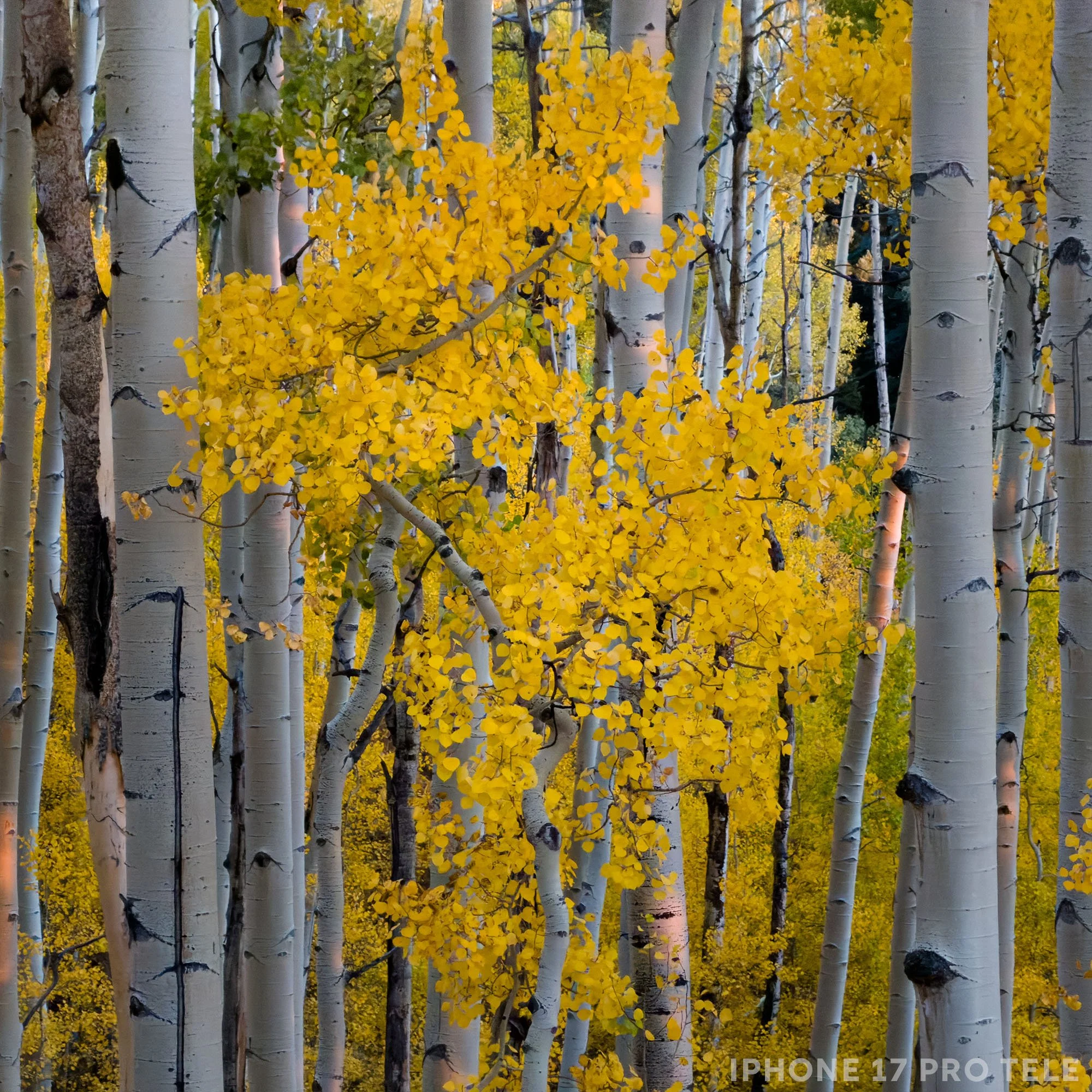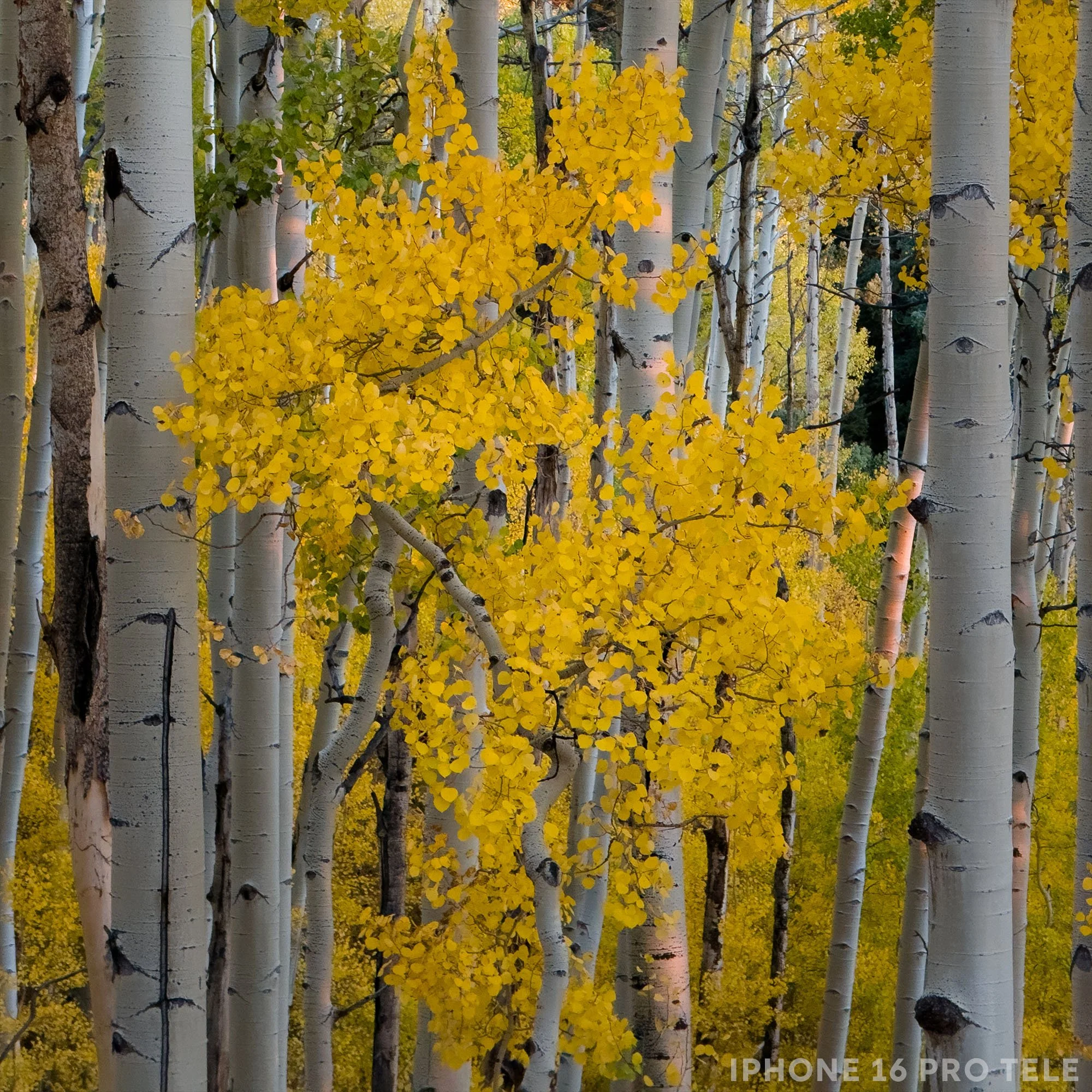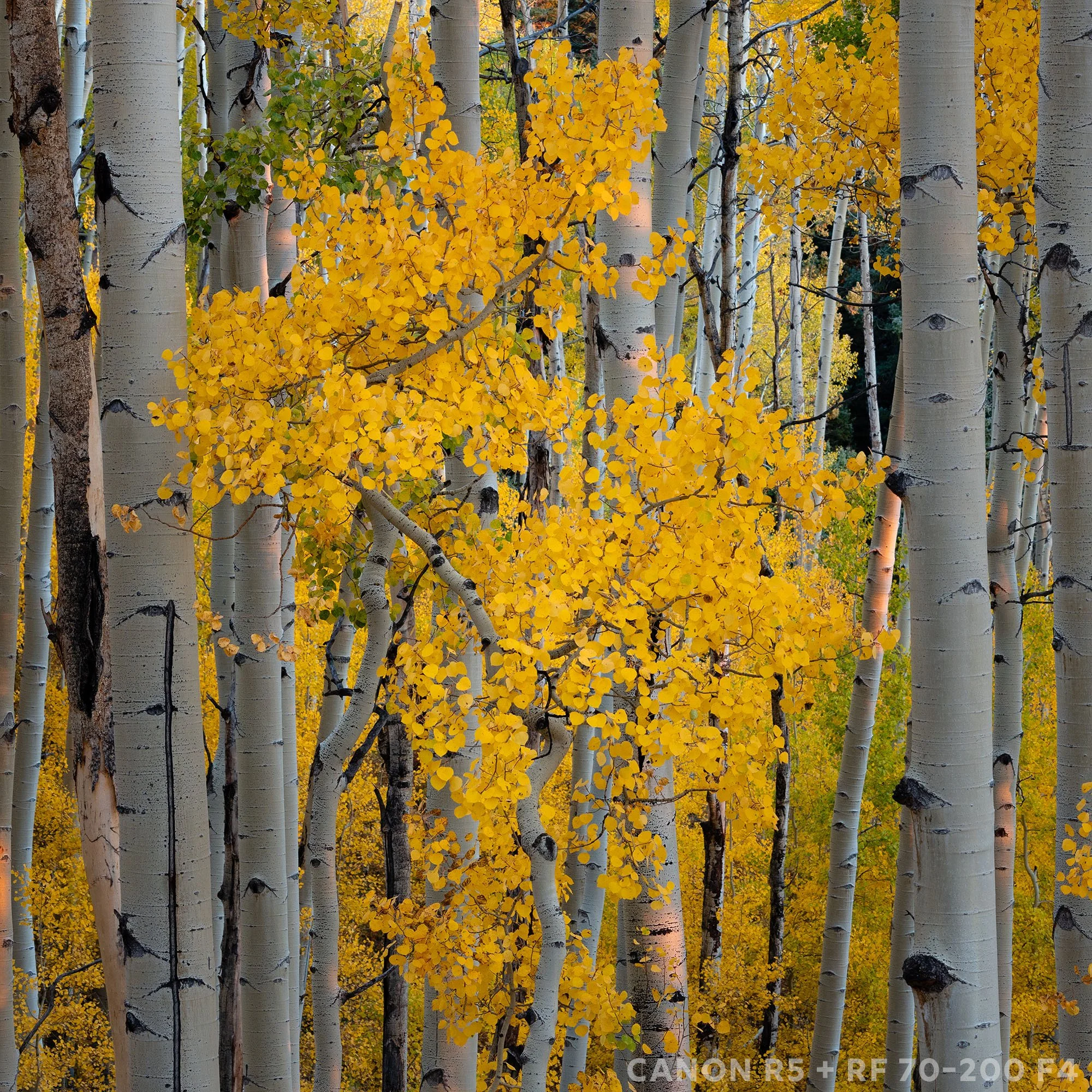A Review of the iPhone 17 Pro for Photography
Every year I take the new iPhone Pro model and compare it to my Canon R5. This is my 5th year in a row conducting this comparison and over those years I’ve been extremely impressed and sometimes disappointed. This year I was hopeful to see an improvement on the new Telephoto lens but as you’ll see from the images, it is not all about a stat sheet. I’ll let the photos speak for themselves and also you can download a few of the raws I’ve taken this year to explore them yourself.
All images in this article are edited to match my editing on the Canon R5. The idea is to see if we can push iPhone photography to the limits and match a full-frame camera like the Canon R5.
iPhone 17 Pro’s New Telephoto Camera
For photographers the major upgrade this year is on the telephoto camera of the iPhone 17 Pro. Not only is it a 56% larger sensor than the previous iPhone 16 Pro, we also get access to the 48mp quad-bayer sensor technology that was added to the Ultra-wide camera in the iPhone 16 Pro and the main camera on the iPhone 14 Pro. The combination of a larger sensor and access to the same technology that impressed me so much on the iPhone 14 pro - I was hopeful and excited.
Over the last week or so I’ve been taking images on the iPhone 17 Pro in Colorado, as I do every year, and I’ve put them under the microscope. Let’s take a look at a sunset shot I took on the iPhone 17 Pro Telephoto, iPhone 16 Pro Telephoto, and my Canon R5 with an RF 70-200 f4 lens.
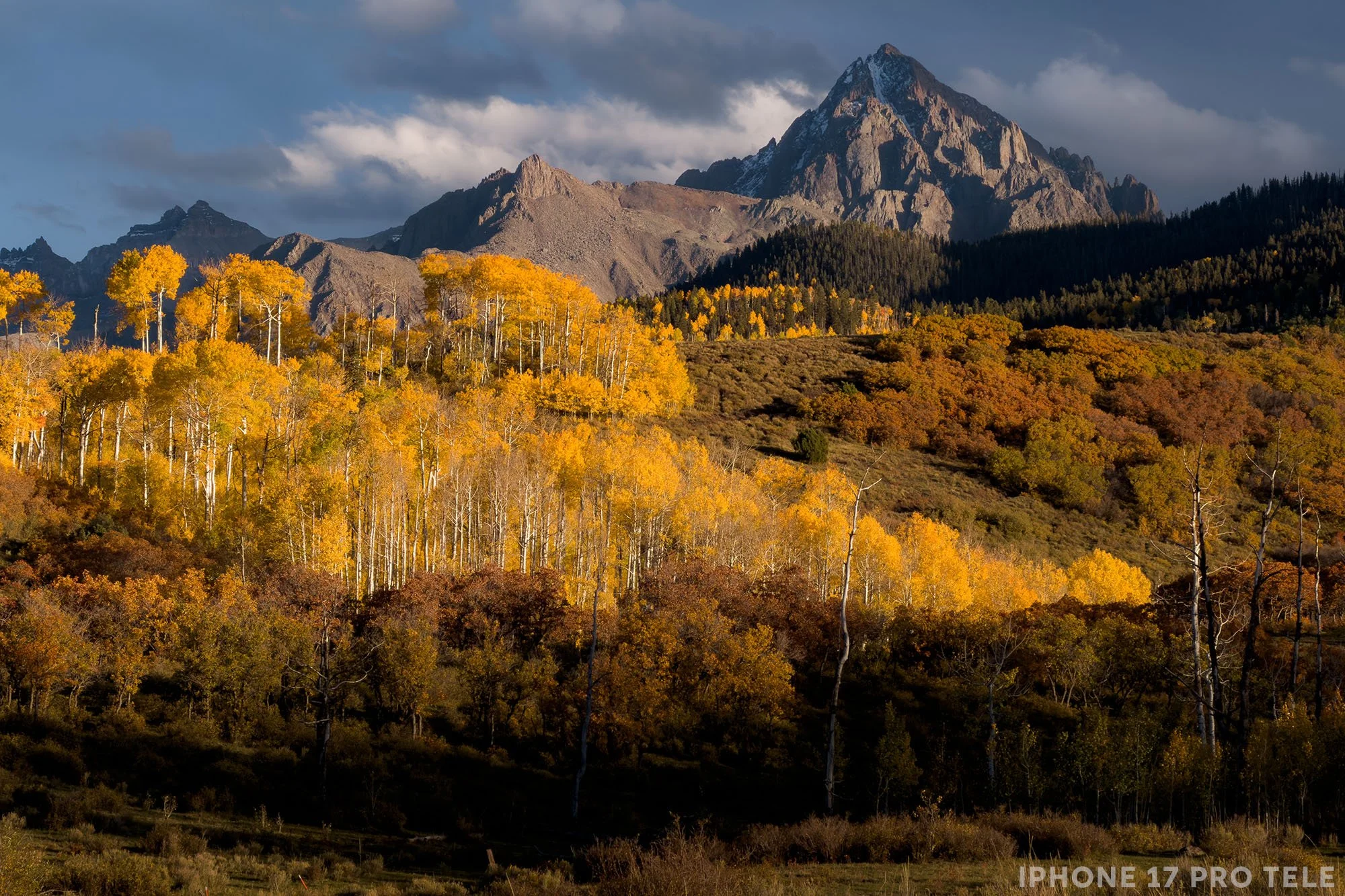
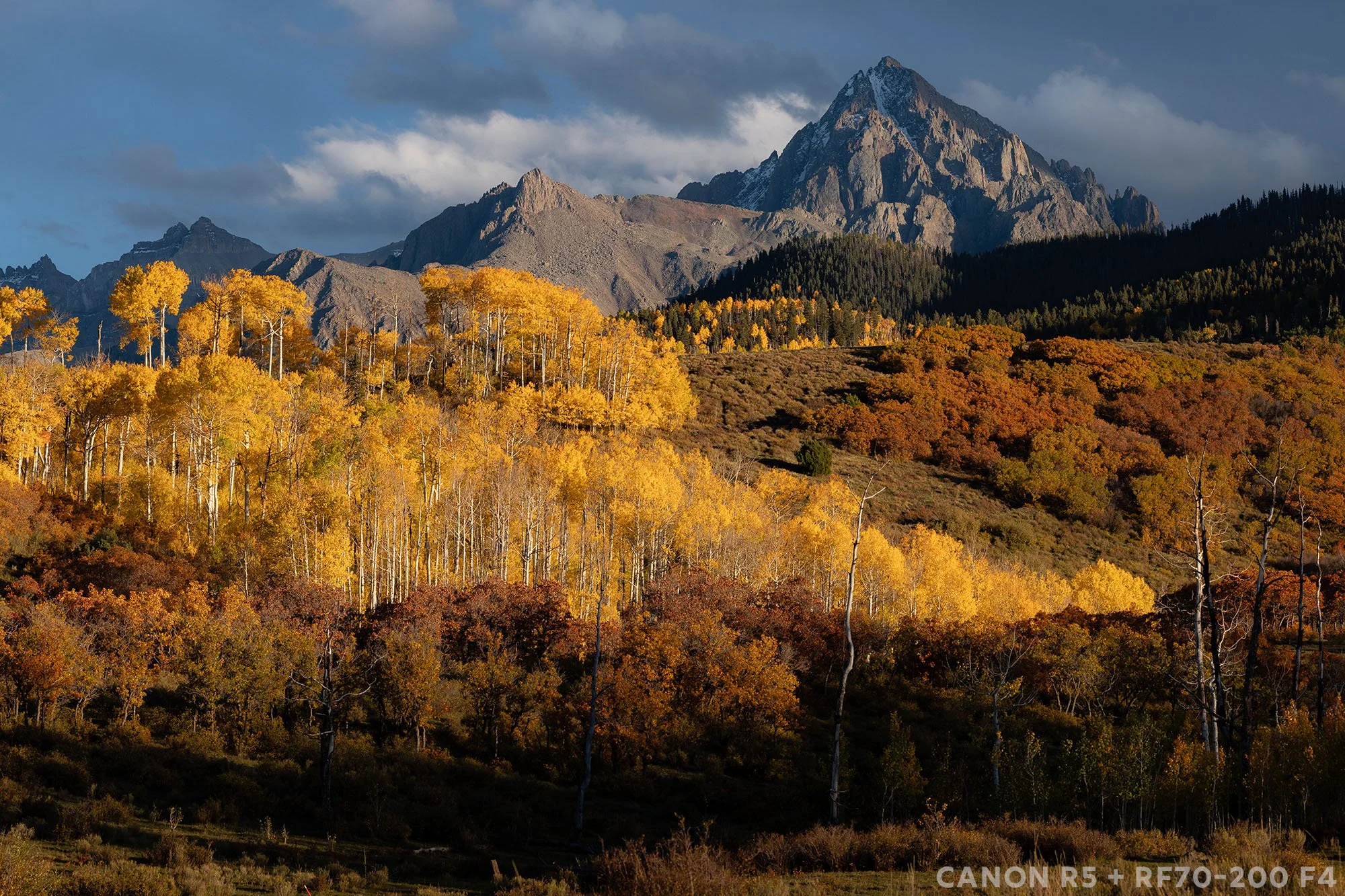
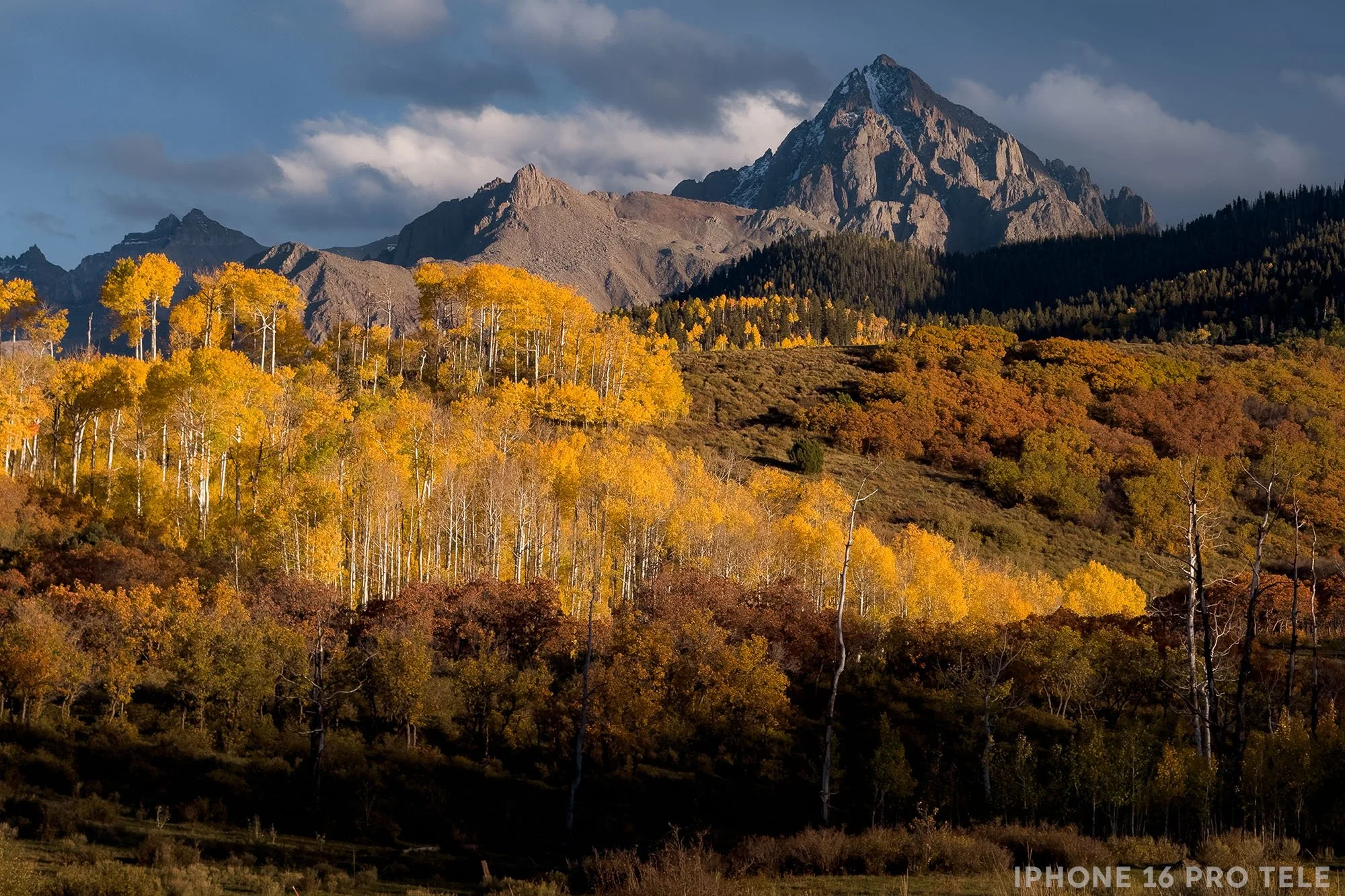
Something to keep in mind is that I shot these images at 100mm on both the Iphone 17 Pro and Canon R5 however I had to recompose and crop those images in to match the 120mm lens of the iPhone 16 Pro. The iPhone 17 Pro doesn’t render mountain details like I expected it to, as this is the area that typically does better on those quad-bayer sensors and their processing algorithms. In comparison, the foliage and tree areas look better than I expected. If you compare the foliage of the trees on the iPhone 16 Pro to the iPhone 17 Pro, there is more detail in the 17 Pro image which is especially impressive considering we are 20% zoomed into the iPhone 17 Pro image. Overall I would say the iPhone 17 Pro does a decent job here, but the results are nothing like how I felt 3 years ago on the main camera of the iPhone 14 pro.
We aren’t completely done yet though, as the story changes once we take a look at images without lots of light. First lets take a lot at a more intimate scene I composed of some fall foliage and aspen trees while the sun was still peering through and highlighting those aspen trunks.
One thing to mention here is dynamic range. Both iPhones do a fantastic job capturing a very high dynamic range in these scenes. That cannot be understated and is something I don’t wish to take for granted considering it didn’t get this good until the past 5 years. However it is something I’ve come to expect from the processing on iPhones. Once you look past the dynamic range, it’s really the details that matter. The iPhone 17 Pro does a good job with the foliage in the scene with decent subject separation. It’s not until you look at the iPhone 16 Pro image that you start wondering where the upgrade actually is in the iPhone 17 Pro.
Keep in mind both the Canon R5 and iPhone 17 Pro images are cropped in to better match the iPhone 16 Pro. That being said, when you look at the two iPhone images it’s difficult to see much difference. Yes we are getting some pixelation and sharpening when zoomed completely into the iPhone 16 Pro image but that is to be expected on a 12mp image. The iPhone 17 Pro image is more detailed but not by much.
Where this story changes is when the light gets a bit lower in the scene and as in years past, also where that quad-bayer sensor struggles. Let’s just omit the Canon R5 image from this comparison and strictly take a look at the iPhone 16 Pro and iPhone 17 Pro images. If you see what I see, it is that the iPhone 16 Pro image looks… better. Sure it lacks the resolution, but notice all the “mushy” areas in the iPhone 17 Pro image, especially in the darker areas. It almost looks like the leaves were moving in the exposure, but that is not the case. The leaves were perfectly still for these images and all cameras were on a tripod.
This happens because that quad-bayer sensor is taking multiple images and combining them together the moment you press the shutter button. The issue is, in lower light and higher ISO situations, it simply doesn’t combine and render foliage areas very accurately. The iPhone 16 Pro image doesn’t suffer from this because it is being taken a single image without any combination processing. I experienced similar results when I looked at the new sensor on the iPhone 16 Pro’s ultra-wide camera last year.
Ultimately I’m disappointed in this years results. In a couple instances, the iPhone 17 Pro renders a little bit more detail - but not by much. In other cases it’s genuinely just worse. I’d be okay this tradeoff if the daylight shots were as sharp as the results from the main camera’s quad-bayer sensor, but they are not. I think this camera/lens combo still needs work. That being said, I have to say these results from a phone are incredibly impressive overall, but that statement also applies to the iPhone 16 Pro.
iPhone 17 Pro’s Main Camera Comparison
Nothing new was announced for the main camera sensor but I always like to do one comparison to see if there are any differences in processing or “magic” year over year. I’ve shot this exact same scene for the iPhone 17 Pro, iPhone 16 Pro, and the iPhone 14 Pro. Of course the conditions changed over the years but it’s a nice way to subjectively look at varying results. I’ll include these images in the raw download if you’d like to see more.
For this article we’ll just be taking a look at the iPhone 17 Pro compared to the Canon R5 in both daylight and blue hour (low light) conditions. The blue hour shot is where we could see meaningful differences year over year as Apple tunes their processing for low light images.
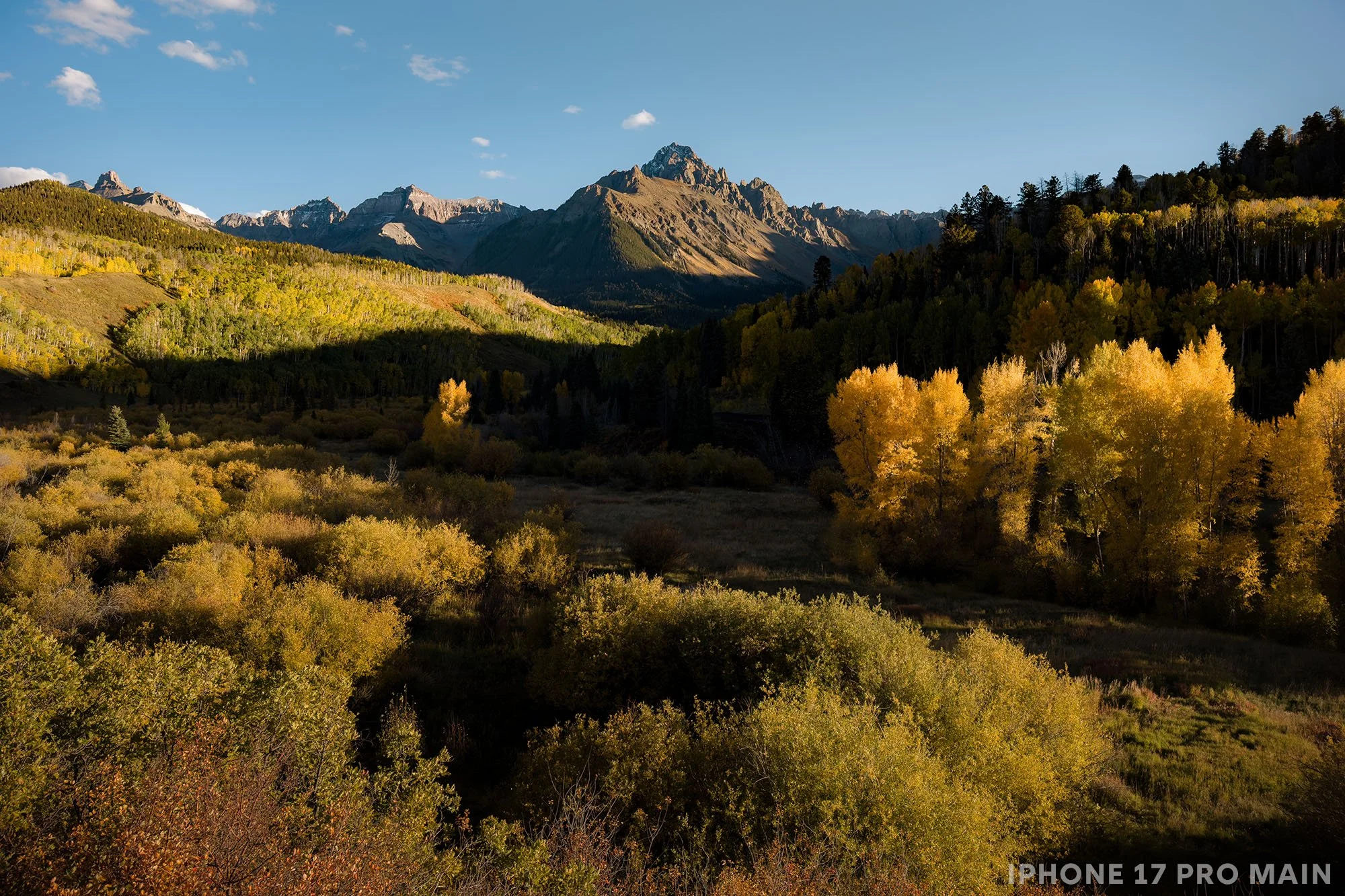
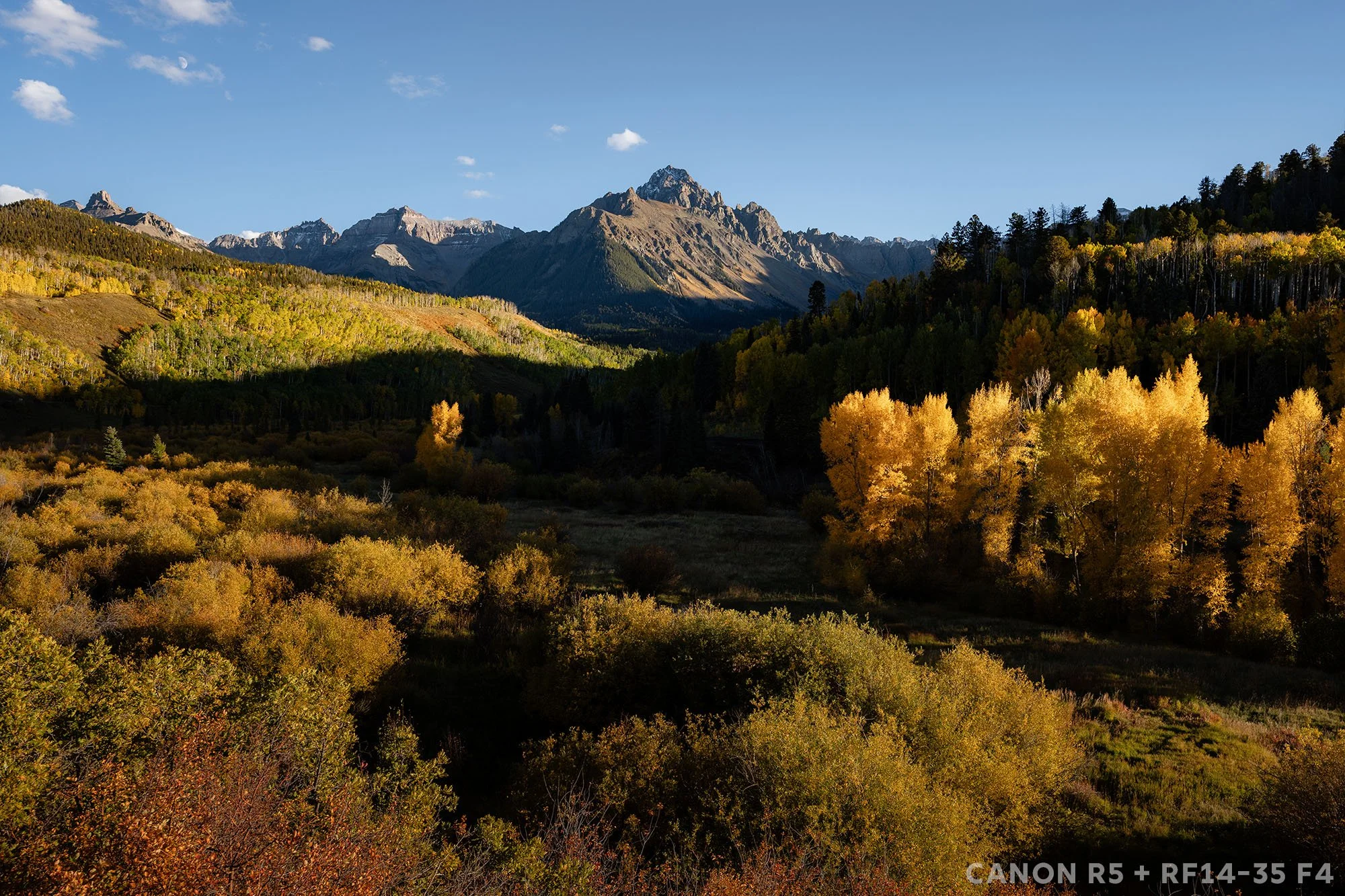
Year over year, this is still the most impressive results I’ve had on a phone camera. When I tested this sensor on the iPhone 14 Pro three years ago, I was blown away. The same results continue this year. The main camera is still a phenomenal camera and renders detail far better than it should be capable of.
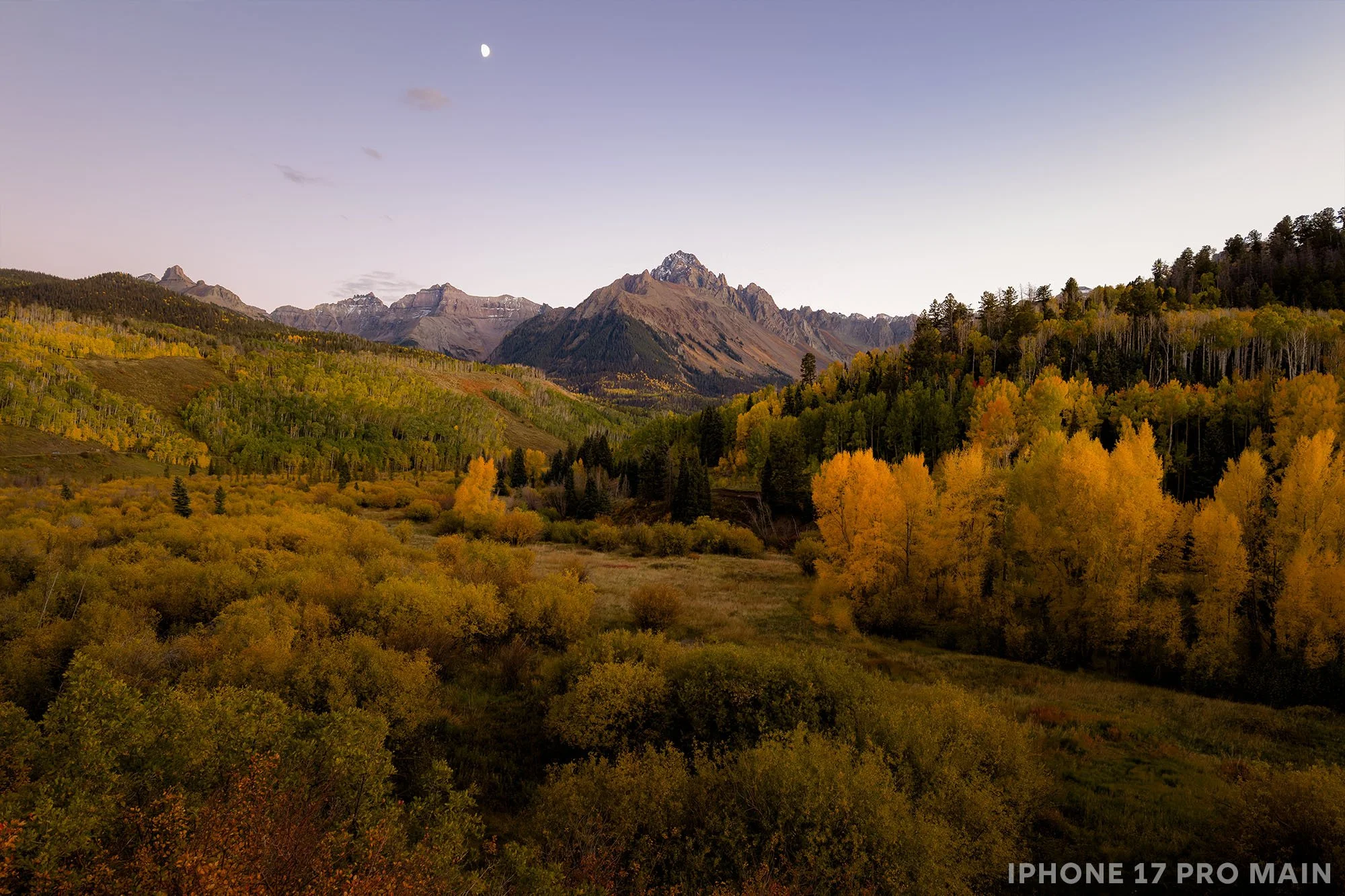
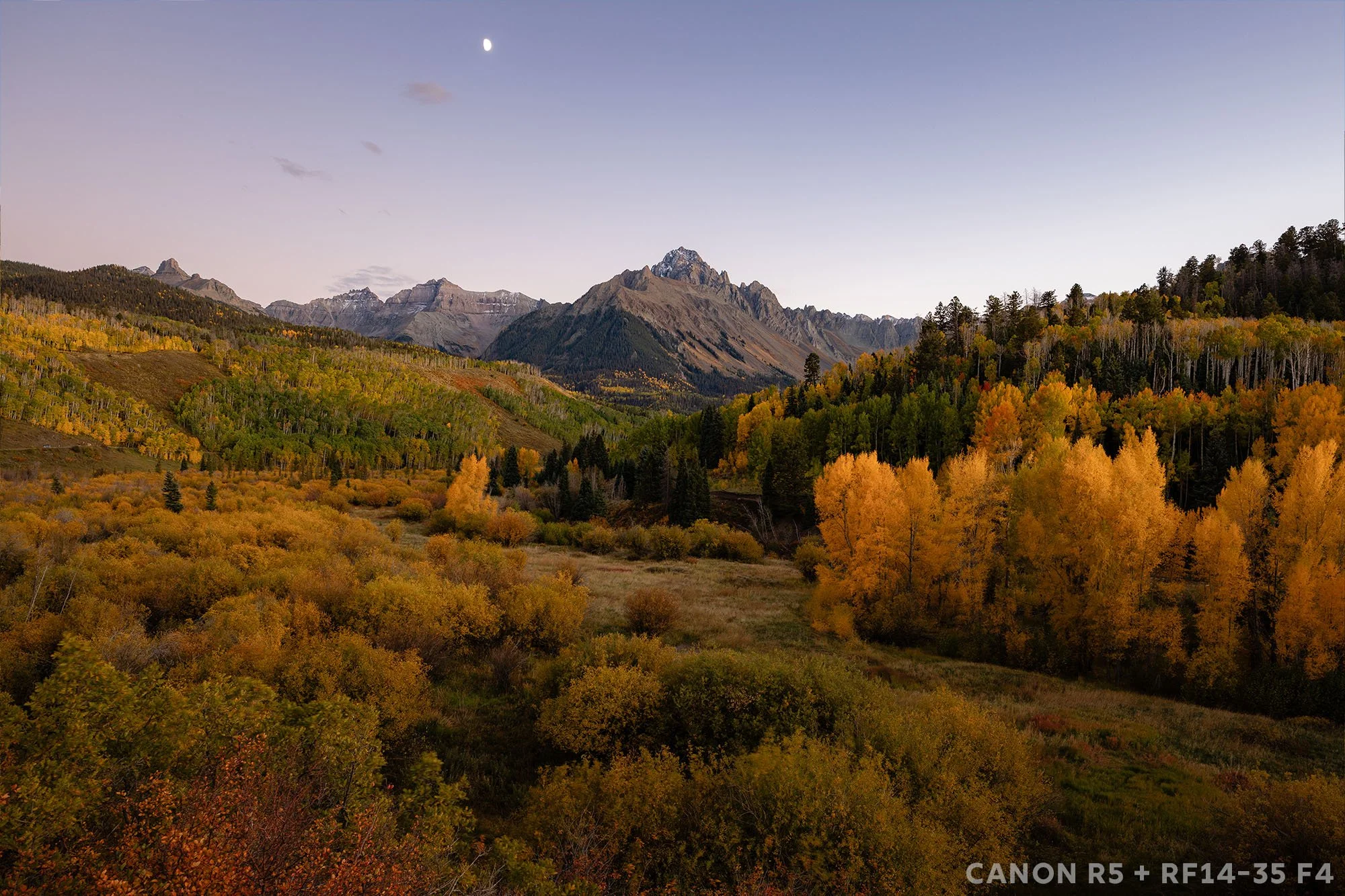
Taking a look at the low light test, the peaks are typically rendered well in these tests and the foliage is where the iPhone images struggle. This year seems somewhat improved over what I remember from 3 years ago. Of course that is subjective, and the conditions were different. However just looking at the iPhone 17 Pro image in a vacuum, these are damn good results for a lower light image.
New Selfie Cam and Conclusion
While my focus is on photography and thus this deep dive into images I’ve captured out in the field. There is a new selfie cam on the iPhone 17 Pro. In my testing, the image quality for photos isn’t drastically changed but the new sensor is a square sensor. This allows you to conveniently take landscape (horizontal) images while holding the phone in portrait (vertical) orientation. It also allows you to film vertical content while the phone is horizontal. This can also be super helpful when vlogging and overall the video quality does seem improved because the sensor is larger.
Overall I’d say this years iPhone 17 Pro is a skip if you’re on the iPhone 15 Pro or iPhone 16 Pro. Honestly it might not even be worth the upgrade if you’re on the iPhone 14 Pro for photography. The selfie cam is improved, thus if you find yourself using the phone to vlog - I could see that being a worthwhile upgrade. However for photography, both the “upgraded” ultra-wide of the 16 Pro and now telephoto of the 17 Pro are not significant in anyway to go out and grab the new Phone.
There aren’t that many upgrades outside of the Cameras this year on the iPhone 17 Pro either. Last year we at least had the camera control button, which ironically I think gets in my way more than it is useful - but maybe thats just a me thing! If you’re on an iPhone 13 Pro or before, absolutely consider upgrading - if only for the main camera sensor upgrade. If you’re on a 15 Pro or 16 Pro, I’d skip this years phone and wait to see what comes out next year.
Buy Me a Coffee!
If you found value in this content feel free to help put gas in the tank or keep me caffeinated :) No pressure, thanks for being here.

